Hydrogels in cancer treatment: mapping the future of precision drug delivery
- PMID: 40698090
- PMCID: PMC12279752
- DOI: 10.3389/fimmu.2025.1607240
Hydrogels in cancer treatment: mapping the future of precision drug delivery
Abstract
Background: Current primary tumor treatments include curative resection, chemotherapy, and radiotherapy. However, these conventional methods lack precise drug delivery. Hydrogels, adaptable to the biological characteristics of different tumors, offer potential as drug delivery systems and represent a significant area of research in tumor treatment. In this study, we aimed to conduct a bibliometric analysis to reveal the current progress and future prospects of hydrogels for drug delivery in cancer.
Methods: Publications concerning hydrogels in tumor drug delivery were retrieved from the Web of Science Core Collection (WoSCC) database. Data regarding countries/regions, institutions, journals, authors, and document types were collected. Bibliometric analysis and network visualization were performed using CiteSpace, HisCite, VOSviewer, Alluvial Generator, and R software.
Results: China, the United States, and India were the leading contributing countries. Of the 98 relevant categories, 94 experienced citation bursts between 2000 and 2024. The research team led by Professor Pourmadadi Mehrab demonstrated substantial influence in this field. The International Journal of Biological Macromolecules was the most prolific journal. The top three emergent categories originated in 2020 or later, are "Chemistry, Applied", "Engineering, Environmental", and "Biochemistry & Molecular Biology". "Designing hydrogels for controlled drug delivery" was the most highly cited article. Recent emergent keywords included immunotherapy, immunogenic cell death, carboxymethyl cellulose, and antibacterial. Key concept alluvial flow visualization revealed six terms: peritoneal carcinomatosis, iron oxide nanoparticles, drug delivery, release kinetics, carbon dots, and pathway. Nano-composite hydrogels, immunotherapy, quercetin, pancreatic cancer, and oral cancer exhibited recent activity within the cited article timeline, suggesting these areas as potential future research hotspots.
Conclusion: This bibliometric analysis identifies future research directions within the developing field of hydrogels for drug delivery in cancer. This study provides recommendations and directions for the development of hydrogels as tumor drug delivery systems.
Keywords: CiteSpace; bibliometrics; cancer; drug delivery; hydrogels.
Copyright © 2025 Liu, Zhou, Yang, Wu, Chen, Wang and Chen.
Conflict of interest statement
The authors declare that the research was conducted in the absence of any commercial or financial relationships that could be construed as a potential conflict of interest.
Figures
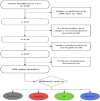
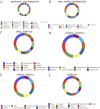
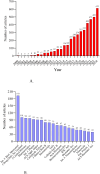

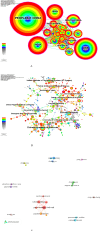

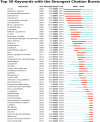



Similar articles
-
Research status, hotspots and perspectives of artificial intelligence applied to pain management: a bibliometric and visual analysis.Updates Surg. 2025 Jun 28. doi: 10.1007/s13304-025-02296-w. Online ahead of print. Updates Surg. 2025. PMID: 40580377
-
Bibliometric and visualized analysis of global distribution and research frontiers in tumor immune escape.Front Immunol. 2025 Jun 5;16:1586120. doi: 10.3389/fimmu.2025.1586120. eCollection 2025. Front Immunol. 2025. PMID: 40539064 Free PMC article.
-
Driving innovations in cancer research through spatial metabolomics: a bibliometric review of trends and hotspot.Front Immunol. 2025 Jun 10;16:1589943. doi: 10.3389/fimmu.2025.1589943. eCollection 2025. Front Immunol. 2025. PMID: 40557160 Free PMC article.
-
Research trends on lactate in cancer: a bibliometric analysis and comprehensive review (2015-2024).Front Immunol. 2025 May 9;16:1587867. doi: 10.3389/fimmu.2025.1587867. eCollection 2025. Front Immunol. 2025. PMID: 40416986 Free PMC article.
-
Global research trends and hotspots in prognostic prediction models for pancreatic cancer: a bibliometric analysis.Front Oncol. 2025 Jul 10;15:1588735. doi: 10.3389/fonc.2025.1588735. eCollection 2025. Front Oncol. 2025. PMID: 40708943 Free PMC article.
References
Publication types
MeSH terms
Substances
LinkOut - more resources
Full Text Sources
Medical

